Speaker amplifiers: varieties and selection criteria
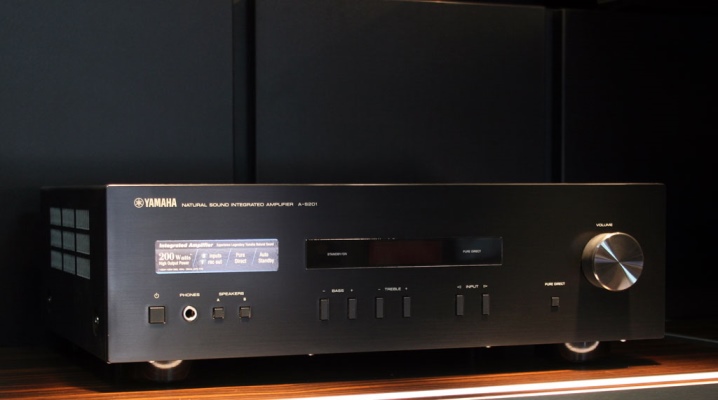
Choosing the right amplifier for audio speakers is not as easy as it might seem at first glance. Incorrectly selected equipment, at best, will lead to the fact that the speakers simply will not provide high-quality sound reproduction, and at worst, will lead to a reboot and breakdown of the speaker system.
That is why, before choosing an amplifier, it is necessary to study in more detail what it is and what requirements it must meet.
Peculiarities
All speaker systems for professional and household use use a special device - a sound amplifier. It is necessary to ensure loud, clear and high-quality audio playback without any distortion or interference.
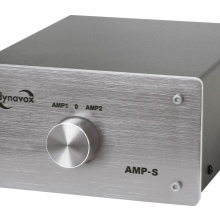
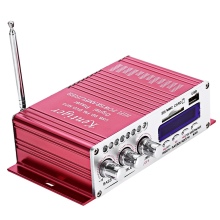
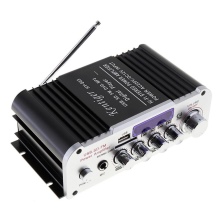
This device converts the incoming electrical signal into a stronger one by increasing the current power. The power amplifier is made both as a separate device, which is part of the acoustic installation, and in the form of a built-in component. The installation includes the following structural elements:
- direct sound amplifier - connects to a source of audio recordings, may differ in higher or lower output voltage;
- power unit - this element is responsible for converting the incoming electric flux into current with higher voltage parameters;
- output stage - consists of a group of transistors that convert the high voltage from the power supply into the correct signal form, which is transmitted to the sound device;
- adjustment module - this component is present only in stand-alone amplifiers, it determines the fine tuning of the sound quality at the output.

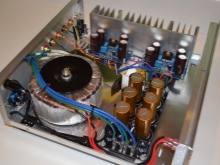
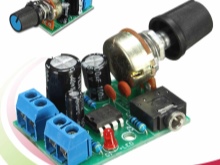
The principle of operation of any sound amplifier is reduced to several processes.
- From a standard electrical network of 220 volts, a current flows into the power supply, after which it is transformed into a constant value.
- A sound amplifier for loudspeakers through the inputs receives a signal from any device connected to them, for example, a player, and changes its amplitude using a constant current. In this case, the length of the sound wave remains unchanged.
- The signal with amplified power is transmitted to the output device, that is, the speakers, through which it is already reproduced in a clearer and better sound.
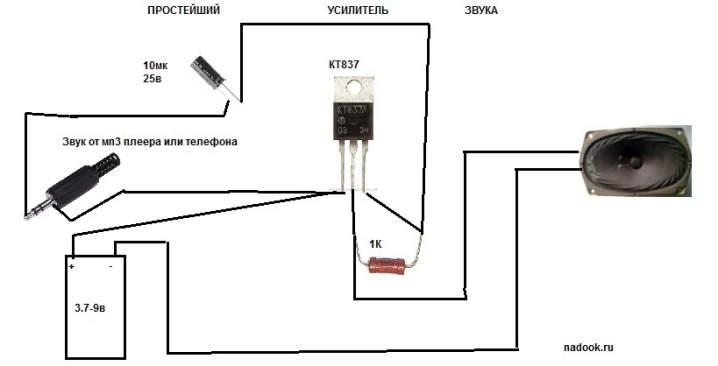
Why is it needed?
Many people call the sound amplifier the "heart" of the audio system - it is responsible for the manifold increase in signal strength.
It is known that all audio information in acoustic equipment is transmitted by means of electrical vibrations... Both analog and digital settings work only after receiving data from a neighboring unit or from some other device. As a result, the output electrical vibrations are rather weak. Of course, they contain all the information necessary for sound reproduction, nevertheless, they are incapable of performing any serious work. That is why every speaker, including each of its speakers, requires the correct power supply, otherwise the sound will be inexpressive.
It is for this purpose that a sound power amplifier is used: it prepares sound for acoustics, enriches it and literally charges the speakers with energy through the line outputs.
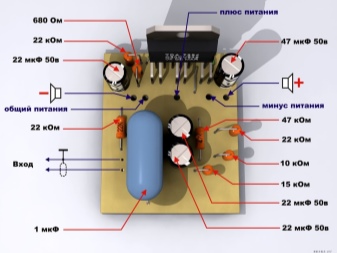
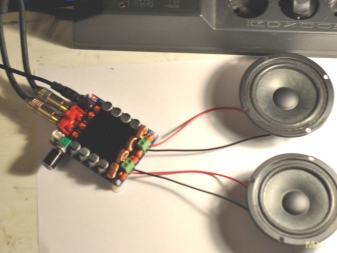
Species overview
The 21st century has undoubtedly contributed to the expansion of technological diversity. Nowadays, amplifiers for speakers are presented in a wide variety of designs, but you can make a convenient classification of such equipment.
So, there are three main types of such equipment.
- Preamplifier. If, for example, a device such as a simple microphone works in poor quality, then the amplifier will help it process the audio, improve the information data and add the necessary power.
- End amplifier... This device is engaged in its immediate duties, that is, it amplifies the sound. This is the kind of equipment you see in recording studios, along with all the other professional gadgets and installations.
- Integrated amplifier. It is a kind of hybrid of the above. This system is the most widespread and in demand among users. Like any other combo setup, it gives a slightly lower quality of sound reproduction in comparison with concert amplifiers, but at the same time significantly wins in its versatility and affordable price.
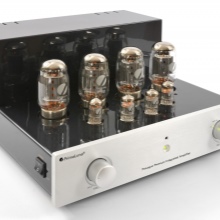
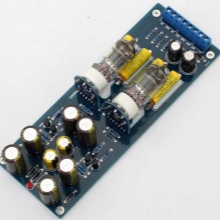
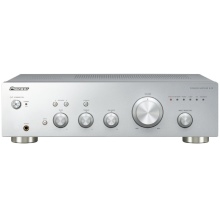
An amplifier for the speakers is also distinguished according to the option of receiving the signal.
The analog unit is powered by electrical vibrations coming from the player and multiplies their power parameters. To connect such an amplifier to digital broadcasting, you need special converters.
Digital, as the name suggests, converts incoming digital audio signals to analog, thereby making them understandable to the speakers.
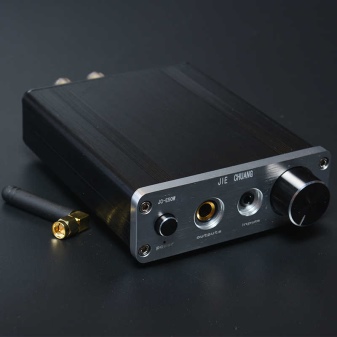
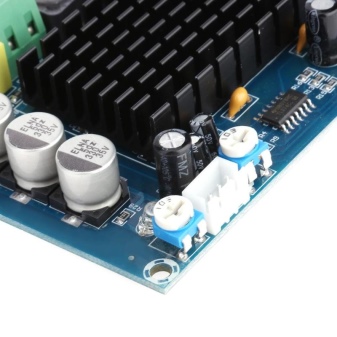
Depending on the type of amplifier, transistors can function in different ways, that is, those elements that increase the signal power inside the device itself. Their typical subdivision on this basis is so diverse that it is possible to focus only on the most significant differences. Without going into technical details, let us turn your attention to the technical and operational parameters that are inherent in equipment of different categories.
- Classes A, B, AB, H and their various derivatives. Despite the fact that the equipment in the categories presented may differ in the degree and period of opening of the transistors for conducting current, the principle of their operation is approximately the same. The main problem with any speaker is that at the initial stage of current passing, nonlinear distortion of the output signal often occurs. Any class A amplifiers are designed to neutralize them. This leads to a decrease in efficiency and serious overheating of the equipment. Accordingly, amplifiers of group A are recognized as the most accurate, they are less susceptible to interference than any others, but they have lower performance parameters.
- Class D amplifiers. Such equipment passes electric current immediately, as a result, the presence of any nonlinear distortion is minimized. Strictly speaking, this version of amplifiers is the opposite of the first group. They significantly gain in efficiency, but show themselves weakly when reproducing the frequency range, this is especially noticeable when it comes to higher frequencies. It makes sense to use such amplifiers in cars.
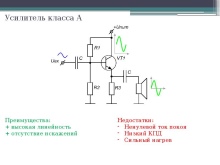
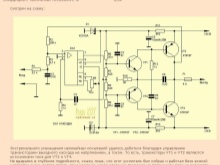
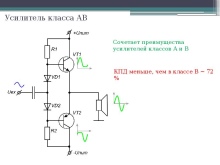
Top Models
To understand the variety of the presented sound reinforcement equipment, it is worth considering the most popular models that have earned the best ratings from experts and users.
Yamaha A-S201
The advantages of this model include the ability to create a surround sound space, the presence of a phono stage, and auto-off options.
The disadvantages include the lack of a balance regulator, as well as the noise level, which is slightly higher than in some other similar systems.
This model is an integrated amplifier delivering 100 watts per channel - this power is more than enough for any type of speakers.Perfectly manifests itself in sound reproduction of any, even the most complex melodies.
The model looks stylish and laconic, made of reliable and practical materials.
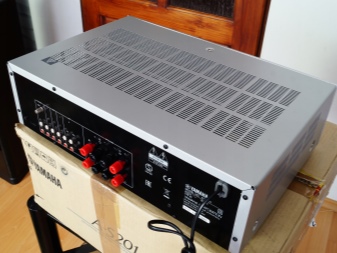
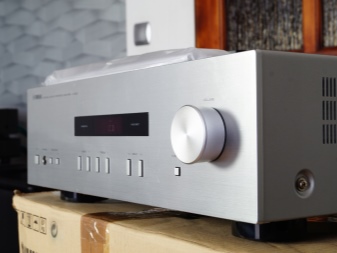
SMSL SA-36A Plus
This model has Bluetooth, which makes it possible to broadcast audio from the phone or by radio. Besides, a USB port is provided, as well as a slot for microSD cards.
The advantages include small size, as well as affordable cost. Of the minuses, users note insufficient power, as well as an external power supply.
All in all, this is a rather interesting compact amplifier that transmits high frequencies best of all, although lows sound quite decent.
Optimal for medium power acoustics, works best in small rooms.
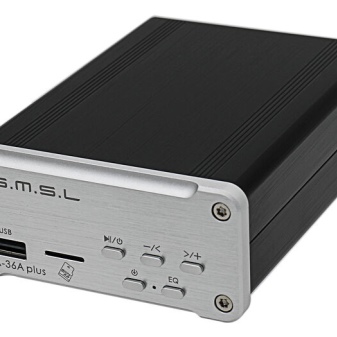

TPA3116 LM1036 (2.0)
Another representative of portable class A mini-amplifiers delivering 50 watts per channel. This device is twice as powerful as its predecessor, it provides crisp and clear sound reproduction, and The efficiency reaches 90%, so the equipment practically does not heat up and does not need any additional structures for cooling.
Overall, this is a cheap and reliable model that is the best choice for home use.
Among the shortcomings, they note the absence of a case, as well as an external power supply.
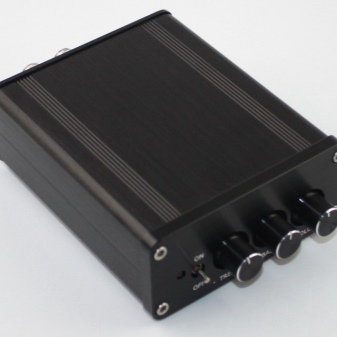
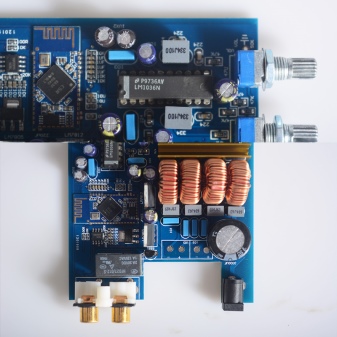
Pioneer A-10
This equipment gives a nice, deep bass sound, but the treble is also very pleasant. In the sound, you can feel a certain "tube-like" quality, although in general the audio range is more solid. It has high signal-to-noise parameters. At the same time, it is distinguished by increased demands on the sound source.
However, it was not without its drawbacks. In particular, when listening at high volume, the equipment heats up noticeably and with prolonged operation it simply goes into defense. In addition, there is no remote control included in the kit, which makes operation not entirely comfortable.
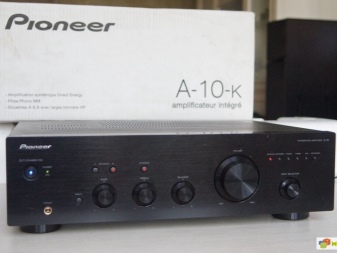
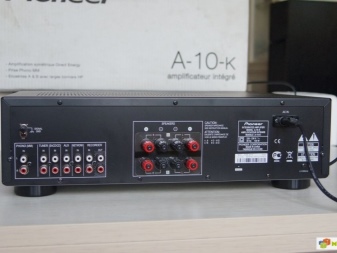
How to choose?
When buying the optimal model of an audio amplifier for speakers, you need to focus on such fundamental parameters as the power and impedance of the device.
Power
Power characteristics are usually indicated in the user manual, which is included in the package, as well as directly on the body. It is necessary to distinguish between the peak power, which the speakers can take for a short time, and the nominal power, that is, the one at which the sound will be reproduced without interference and distortion. It is on it that you need to use the equipment.
With the wrong equipment, some unpleasant manifestations are possible.
If the power of the amplifier is higher than the power of the speakers, then there is no need to worry, but only if you do not plan to turn on the speakers to the maximum. In general, 50-70% of the maximum possible is enough for comfortable listening. Experts believe that this combination provides the highest quality sound. However, it is possible that sometime, slightly forgetting, you decide to set the maximum volume, and this will seriously harm the speaker diffusers.
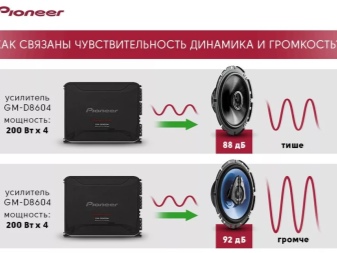
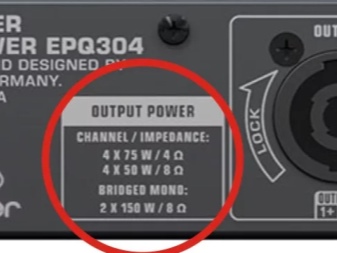
If the power of the installation matches the power of the speakers, then at first glance it will be the perfect combination. However, again, at maximum volume, the acoustic installation works at its maximum capabilities, supplies direct current to the output, thereby disabling the speaker. Of course, the highest quality models are equipped with special capacitors, which can reduce the risk of "frying" the equipment, but you should not risk it. It is best to use such equipment within 40-70% of the possible volume.
The power of the amplifier is less than the power parameters of the acoustic installation. It would seem that problems here are absolutely excluded, but, as practice shows, during active operation, the danger of "frying" with direct current still persists. The recommendation is the same: try not to turn on the equipment more than 60-70% of the possible level.
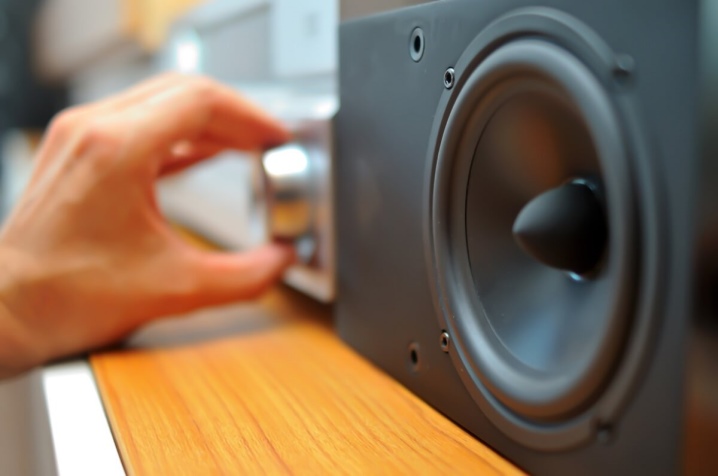
Resistance
It is generally accepted that the higher the impedance value, the clearer the sound reproduction will be, since the resistance has the ability to dampen distortion and various kinds of noise. However, you need to understand that Unlike the same headphones, in which the impedance parameters can vary over a fairly wide range, in speakers this indicator is usually in the corridor from 4 to 8 ohms. All other things being equal, the resistance here will be lower than the power consumption of the speakers, respectively, and the sound volume is quieter.
A situation in which the impedance of the amplifier is lower than the impedance of the speakers is considered quite dangerous. In this case, the speakers may simply not cope with the incoming signal and fail.
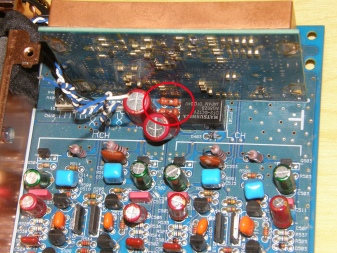
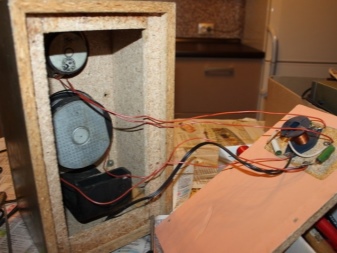
The ideal case is when the resistance of both units will correspond to each other.
In a situation where the impedance of the amplifier is less than the corresponding parameter of the speakers, then you do not risk the serviceability of the acoustic equipment. At the same time, the output power will still be one and a half, or even two times less than what your acoustics can give - that is, the speakers simply will not give their fullest sound.
How to set up correctly?
If you have installed a passive audio system, then you will need a two-way audio amplifier to connect. If there are a lot of speakers at your disposal, then it is better to take a four-channel one, since it is impossible to connect both an amplifier and a subwoofer to a two-channel one at the same time. - in this case, the power will be too high and the device may burn out.
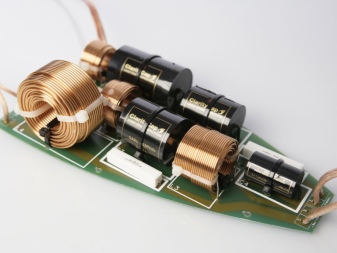
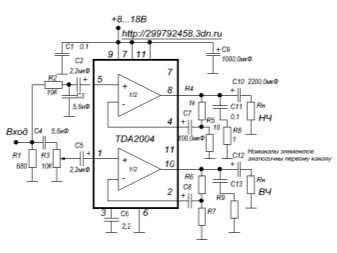
The speakers are fed to the amplifier through a cable, usually RCA. Slightly less commonly used is a two-wire "tulip", it includes red and white wires for different channels. One end of the wire connects to the speakers, the other to the corresponding connector on the amplifier body. Then the amplifier is connected with a wire to the device responsible for sound output (computer, TV or player).
We draw your attention once again to the fact that you can connect either a pair of front speakers or only one subwoofer to a two-way amplifier, but not all of them together.
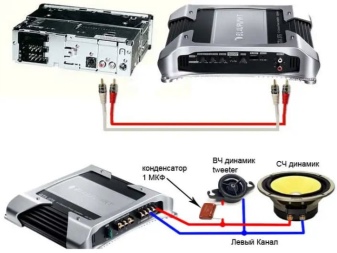
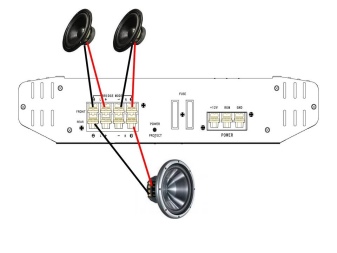
See below for speaker powers and amplifiers.













The comment was sent successfully.